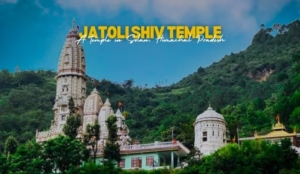“Discover the Hidden Gem of Kagbhusandi Tal 🌄 | Trekking Paradise Awaits! 🥾 | Explore Nature’s Beauty 🏞️ #KagbhusandiTal”
About Kagbhusandi Tal:
- Location: Kagbhusandi Tal, a stunning high-altitude lake, is nestled in the Chamoli district of Uttarakhand, India.
- Elevation: Situated at an altitude of approximately 5,230 meters (17,159 feet) above sea level, it’s one of the highest and most pristine glacial lakes in the Garhwal Himalayas.
- Geological Origin: Kagbhusandi Tal is a glacial lake, formed by the melting of glaciers in the region. It is a testament to the region’s rich geological history.
- Natural Beauty: The lake is renowned for its emerald-green waters, surrounded by lush meadows, alpine flora, and snow-capped peaks, making it a paradise for nature enthusiasts and photographers.
- Trekking Destination: Kagbhusandi Tal is a trekker’s delight, with a challenging yet rewarding trek leading to its shores. The trail takes you through pristine forests, scenic landscapes, and diverse terrain.
History of Kagbhusandi Tal:
- Mythological Significance: Kagbhusandi Tal finds a mention in Hindu mythology as a place where sage Kagbhusandi meditated. The lake’s pristine beauty and tranquil surroundings make it easy to see why it attracted spiritual seekers.
- Local Legends: The region surrounding Kagbhusandi Tal is steeped in local legends and folklore, adding to its historical and cultural significance.
- Scientific Exploration: Over the years, Kagbhusandi Tal has attracted scientific interest due to its glacial origin. Researchers study the lake and its surroundings to better understand the region’s geological processes.
- Environmental Conservation: As with many high-altitude ecosystems, Kagbhusandi Tal faces challenges due to climate change and tourism impact. Conservation efforts are underway to protect its fragile ecosystem.
- Adventure Tourism: In recent years, Kagbhusandi Tal has gained popularity as an adventure tourism destination, drawing trekkers and outdoor enthusiasts from around the world.
- Cultural Heritage: The lake and its surroundings have cultural value, as they are often part of traditional treks and pilgrimages for local communities in the Garhwal Himalayas.
Kagbhusandi Tal, with its blend of natural grandeur and cultural significance, continues to captivate those who seek adventure, spirituality, and a deeper connection with the Himalayas.
Facts about Kagbhusandi Tal:
- Hidden Gem: Kagbhusandi Tal remains a relatively undiscovered gem in the Garhwal Himalayas, providing a pristine and untouched natural environment.
- Altitude: Situated at a staggering altitude of approximately 5,230 meters (17,159 feet) above sea level, it ranks among the highest glacial lakes in the region.
- Glacial Origin: Kagbhusandi Tal owes its existence to glacial activity, with its emerald-green waters formed by the melting ice from the surrounding glaciers.
- Biodiversity: The lake and its surroundings are home to a diverse range of alpine flora and fauna adapted to the high-altitude environment, adding to its ecological significance.
- Trekking Paradise: It is a sought-after destination for trekkers, offering a challenging yet rewarding trek that leads through dense forests, pristine meadows, and rugged terrain.
- Geological Richness: The region around Kagbhusandi Tal holds geological significance, providing insights into the Earth’s processes and history.
- Spiritual Connections: Kagbhusandi Tal is steeped in mythological and spiritual lore, with stories of sages seeking solitude and enlightenment by its tranquil shores.
- Conservation Concerns: Like many fragile ecosystems, Kagbhusandi Tal faces challenges from climate change and tourism impact. Conservation efforts are vital to preserve its pristine nature.
- Adventure Tourism: It has gained popularity among adventure enthusiasts, attracting trekkers, nature lovers, and photographers seeking an off-the-beaten-path experience.
- Cultural Heritage: The lake and its surroundings are often part of traditional treks and pilgrimages for local communities, reflecting their cultural ties to the region.
- Weather Variability: Due to its high altitude, Kagbhusandi Tal experiences rapidly changing weather conditions, and trekkers must be prepared for sudden shifts in climate.
- Remote Location: Its remoteness adds to its charm but also necessitates careful planning and preparation for trekkers, ensuring a safe and memorable experience.
Why Kagbhusandi Tal is Famous:
- Untouched Beauty: Kagbhusandi Tal is renowned for its pristine and untouched natural beauty, with its emerald-green waters, snow-capped peaks, and lush meadows, making it a paradise for nature lovers.
- High-Altitude Marvel: Its extraordinary altitude, situated at around 5,230 meters (17,159 feet) above sea level, adds to its fame as one of the highest glacial lakes in the Garhwal Himalayas.
- Challenging Trek: The trek to Kagbhusandi Tal is famous for being challenging yet rewarding, attracting trekkers and adventure enthusiasts seeking a thrilling journey through diverse landscapes.
- Spiritual Significance: Kagbhusandi Tal is steeped in spiritual significance, often associated with the meditations of sages and seekers who have found solace in its tranquil surroundings.
- Mythological Legends: It features in local mythology and legends, deepening its cultural and historical importance in the region.
- Scientific Interest: The lake’s glacial origin and geological richness make it a subject of scientific study, contributing to our understanding of Earth’s processes.
Things to Do in Kagbhusandi Tal:
- Trekking Adventures: The primary activity is trekking to Kagbhusandi Tal. The trail takes you through dense forests, alpine meadows, and rocky terrains, offering breathtaking vistas along the way.
- Photography: Capture the stunning landscapes, the mirror-like lake, and the surrounding snow-clad peaks, creating lasting memories of your journey.
- Bird Watching: The region is home to various bird species adapted to high altitudes. Birdwatchers can spot Himalayan species in their natural habitat.
- Botanical Exploration: Explore the diverse alpine flora in the region, including vibrant wildflowers that bloom during the summer months.
- Stargazing: Due to its remote location, Kagbhusandi Tal provides an excellent opportunity for stargazing. Clear night skies offer a chance to witness celestial beauty.
- Camping: Experience the serenity of the Himalayas by camping near the lake. Camping under the starry sky is a memorable experience.
- Local Interactions: Interact with the local communities to learn about their culture, traditions, and the spiritual significance of Kagbhusandi Tal.
- Environmental Conservation: Be mindful of the fragile ecosystem. Follow Leave No Trace principles and support local conservation efforts.
- Solo Reflection: For those seeking solitude and self-reflection, Kagbhusandi Tal’s tranquil surroundings provide the perfect setting.
- Responsible Tourism: As you explore, practice responsible tourism by minimizing your impact on the environment and respecting the local culture.
Kagbhusandi Tal offers a unique blend of natural beauty, adventure, spirituality, and scientific interest, making it a destination of choice for diverse travelers and explorers.
Things to Know about Kagbhusandi Tal:
- Location: Kagbhusandi Tal is located in the Chamoli district of Uttarakhand, India, nestled in the Garhwal Himalayas.
- Elevation: Situated at an impressive altitude of approximately 5,230 meters (17,159 feet) above sea level, it’s one of the highest glacial lakes in the region.
- Glacial Origin: Kagbhusandi Tal owes its existence to glacial activity, with the lake being fed by the melting ice from the surrounding glaciers.
- Natural Beauty: The lake’s emerald-green waters, surrounded by pristine meadows, alpine flora, and snow-capped peaks, make it a visual marvel.
- Trekking Destination: Kagbhusandi Tal is famous for being a trekker’s paradise, offering a challenging trek that takes you through diverse terrains and ecosystems.
- Spiritual Significance: The lake is associated with the meditations of sages and spiritual seekers, adding to its spiritual aura.
- Scientific Interest: The lake and its surroundings are subjects of scientific study due to their glacial origin and geological significance, contributing to our understanding of the Earth’s processes.
- Biodiversity: The region boasts a rich diversity of alpine flora and fauna, with the meadows and forests providing a habitat for various species.
- Conservation Efforts: Like many fragile ecosystems, Kagbhusandi Tal faces conservation challenges, making sustainable tourism and environmental protection critical.
- Adventure Tourism: It has gained popularity among adventure enthusiasts, drawing trekkers and nature lovers seeking an off-the-beaten-path experience.
How to Reach Kagbhusandi Tal:
- By Air: The nearest airport is Jolly Grant Airport in Dehradun, which is well-connected to major Indian cities. From Dehradun, hire a taxi or take a bus to reach the base point of the trek.
- By Train: Rishikesh and Haridwar are the nearest major railway stations, connected to various cities. From these towns, proceed by road to Joshimath, the starting point for the trek.
- By Road: Drive or take a bus from major cities like Dehradun, Rishikesh, or Haridwar to Joshimath. From Joshimath, trekking routes lead to Kagbhusandi Tal.
- Trekking Route: The trek to Kagbhusandi Tal typically starts from Joshimath and includes trails through lush forests, meadows, and rocky terrain. Local guides are recommended for safety.
- Permits: Ensure you obtain the necessary trekking permits from the forest department or local authorities in Joshimath before beginning the trek, as it passes through sensitive ecological zones.
- Best Time to Visit: The ideal time to visit Kagbhusandi Tal is during the summer months, from May to June and September to October, when the weather is relatively stable and the trekking conditions are favorable.
- Preparation: Given the challenging terrain and high altitude, it’s essential to prepare with appropriate trekking gear, physical fitness, and acclimatization to ensure a safe and enjoyable trek.
- Accommodation: Limited accommodations are available in nearby villages, but camping is a popular choice for trekkers. Plan your stay accordingly.
Reaching Kagbhusandi Tal involves a combination of air, train, and road travel, followed by a trek through some of the most stunning landscapes in the Himalayas. Careful planning and preparation are essential to make the most of this unique adventure.
Travel Tips for Kagbhusandi Tal:
- Physical Fitness: Prepare yourself physically before embarking on the trek, as Kagbhusandi Tal involves challenging terrains and high altitudes. Cardiovascular exercises and strength training are beneficial.
- Acclimatization: Spend at least a day acclimatizing at lower altitudes, such as Joshimath, to minimize the risk of altitude sickness.
- Local Guide: Hire a local guide who knows the trekking route, the changing weather patterns, and the region’s flora and fauna. They can ensure a safer and more enriching experience.
- Proper Gear: Invest in quality trekking gear, including appropriate clothing, trekking shoes, a backpack, sleeping bags, and trekking poles, to stay comfortable and safe during the journey.
- Hydration: Stay well-hydrated throughout the trek by carrying a reusable water bottle and purification tablets, as clean water sources may be limited.
- Packed Meals: Pack essential meals and snacks, as remote trekking trails may not have food stalls. Include energy bars, dried fruits, and ready-to-eat meals for sustenance.
- Trekking Permits: Obtain the necessary trekking permits and documentation from local authorities in Joshimath before starting the trek.
- Weather Awareness: Be prepared for rapidly changing weather conditions, including sudden rain or snowfall. Pack waterproof and warm clothing, as well as a rain cover for your backpack.
- Emergency Contacts: Carry a list of emergency contact numbers, including local authorities, rescue services, and your trekking group members’ contacts.
- Cash and Essentials: Bring enough cash, as ATMs may not be readily available in remote areas. Also, carry essentials like a flashlight, extra batteries, and a power bank.
Best Time to Visit Kagbhusandi Tal:
- Late Spring to Early Summer (May-June): This period offers the best weather conditions with clear skies and comfortable temperatures, making it ideal for trekking and sightseeing.
- Post-Monsoon (September-October): After the monsoon season, the weather stabilizes, and the landscape becomes lush and vibrant. This is another excellent time to visit.
- Winter (November-April): Kagbhusandi Tal is accessible during winter, but extreme cold and heavy snowfall make it challenging. Only experienced trekkers should consider this season.
- Monsoon Season (July-August): Monsoon rains can make the terrain slippery and unsafe for trekking. It’s advisable to avoid Kagbhusandi Tal during this time.
- Wildflower Blooms: If you’re interested in wildflowers, visit in late spring or early summer when the meadows around the lake burst into colorful blooms.
- Wildlife Sightings: Late summer and early autumn are also good for spotting wildlife as many animals become more active during this time.
Choosing the best time to visit Kagbhusandi Tal depends on your preferences, but planning during the recommended seasons will enhance your overall experience and safety during the journey.
Places to Eat Near Kagbhusandi Tal:
- Local Eateries in Joshimath: Before commencing your trek to Kagbhusandi Tal, explore the town of Joshimath, where you can find local eateries serving North Indian cuisine. Try regional dishes for a taste of local flavors.
- Cafes and Restaurants in Auli: Auli, a popular skiing destination near Joshimath, boasts a variety of cafes and restaurants. Enjoy meals with a view of the Himalayan peaks. Don’t miss Garhwali specialties like Aloo Ke Gutke and Mandua Ki Roti.
- Pack Your Own Meals: Given the remote nature of the trek, it’s advisable to carry packed meals or snacks. Prepare sandwiches, energy bars, and pack dry fruits for sustenance during the journey.
- Local Villages: Along the trekking route, you may encounter local villages where you can interact with residents. On occasion, you may request simple meals or tea, offering a unique experience of local hospitality.
- Campfire Cooking: If you’re camping near Kagbhusandi Tal, consider bringing portable camping stoves or equipment to prepare your meals. Cooking under the starry Himalayan sky can be a memorable experience.
Nearby Places to Kagbhusandi Tal:
- Auli: Situated approximately 15 kilometers from Joshimath, Auli is not only a ski resort but also a picturesque destination surrounded by oak and coniferous forests. It’s ideal for nature walks and offers panoramic views of the Himalayas.
- Bhavishya Badri: Located en route to Kagbhusandi Tal, Bhavishya Badri is one of the Panch Badri temples dedicated to Lord Narasimha. It serves as a religious site and a place for quiet contemplation.
- Tapovan: Another trekking destination, Tapovan is known for its hot springs and the Bhagirathi River. It provides a serene environment for relaxation and offers excellent trekking opportunities.
- Vishnuprayag: This is one of the five confluences of the Alaknanda River in the Garhwal region, offering a picturesque spot where the Dhauliganga River merges with the Alaknanda River.
- Malari: A remote village near Kagbhusandi Tal, Malari offers insights into the traditional lifestyle of locals, allowing for cultural immersion and interaction.
- Nanda Devi National Park: This UNESCO World Heritage Site boasts biodiversity and includes trekking routes that pass near Kagbhusandi Tal. It’s a pristine wilderness area worth exploring.
Visiting these nearby places and savoring local cuisine can enhance your Kagbhusandi Tal experience, offering a well-rounded adventure in the Garhwal Himalayas.
Conclusion:
In conclusion, Kagbhusandi Tal stands as an extraordinary jewel amidst the Garhwal Himalayas, offering a harmonious blend of breathtaking natural beauty, spiritual significance, and scientific interest. This high-altitude glacial lake, nestled at the heart of Uttarakhand, beckons adventurers and nature enthusiasts to explore its serene shores and embark on a trekking journey unlike any other.
Kagbhusandi Tal, with its pristine emerald waters, towering snow-capped peaks, and diverse ecosystems, remains a testament to the raw, untouched beauty of the Himalayan region. It is also a place of profound spiritual resonance, woven into local mythology and attracting seekers in search of tranquility.
From a scientific perspective, Kagbhusandi Tal’s glacial origins and geological riches captivate researchers, offering insights into Earth’s natural processes. However, its fragility calls for responsible tourism and conservation efforts to ensure this natural wonder remains intact for generations to come.
FAQs (Frequently Asked Questions):
1. Is Kagbhusandi Tal suitable for beginners in trekking?
- Kagbhusandi Tal’s challenging terrain makes it better suited for experienced trekkers. It’s advisable to have prior trekking experience before attempting this trail.
2. What is the weather like at Kagbhusandi Tal?
- The weather is highly variable, with cold temperatures even in summer. It’s essential to prepare for rapid weather changes, including rain or snowfall.
3. Are there accommodations near Kagbhusandi Tal?
- Accommodations are limited in nearby villages. Trekkers often opt for camping. In towns like Joshimath and Auli, you’ll find a range of hotels and guesthouses.
4. Are there medical facilities available during the trek?
- Medical facilities are scarce along the trekking route. Carry a basic first-aid kit and any personal medications. In case of emergencies, evacuation may be required.
5. How can I contribute to the conservation of Kagbhusandi Tal’s ecosystem?
- To contribute to conservation, follow Leave No Trace principles, avoid littering, and respect local customs. Support local initiatives focused on preserving the fragile ecosystem of the region.





